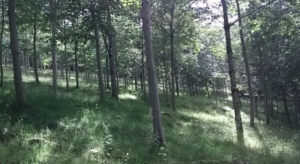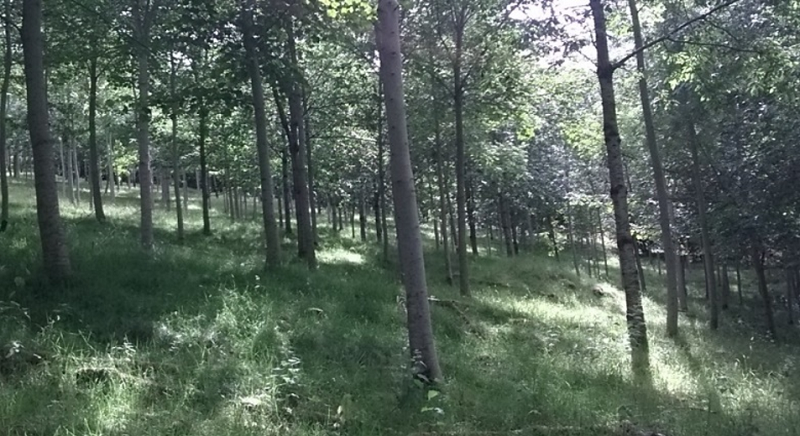Agroforestry – could it work for you?
1 August 2019Hedges, hedgerow trees, shelterbelts, woodland pasture/grazing and wooded riparian buffers are commonplace in the Scottish landscape, however, there are real opportunities for further integration of trees and farming.
Agroforestry integrates trees and shrubs with agricultural crops or livestock. It can boost farm productivity, improve soil health and help manage water flows, provide livestock welfare benefits, enhance wildlife and contribute to mitigating climate change. Here are two examples:
The Forestry Grant scheme offers an agroforestry grant for establishing individually protected trees at either 200 or 400 trees/hectare in sheep pasture which in certain situations is attractive. Some farmers have found other approaches to achieve the benefits they want in their particular circumstances. If the land can be taken out of grazing for a period, trees can be planted under a traditional forestry model at 2m spacing. Final crop trees, at a spacing of between 7 and 8m are selected at about 12 years old. Gradual thinning of the other trees starts about this time. The final crop trees are pruned to improve their form and raise the tree canopy. A grass sward under the tree canopy quickly develops. The sheltered environment under the tree canopy brings forward the flush of spring grass and provides ideal resting areas for livestock. The trees help improve the soil structure and keep the soil drier thereby also extending the grazing season at the back end.
Another example where agroforestry has enormous potential is with chickens. The hens are less stressed and range better under the cover of trees and are therefore more productive. Well-designed woodland planting around chicken sheds not only screens the building but can also to help recapture ammonia emissions. More details of this system can be found at www.farmtreestoair.ceh.ac.uk/.
Stephen Adlard, SRUC for the Scottish Farm Advisory Service
Sign up to the FAS newsletter
Receive updates on news, events and publications from Scotland’s Farm Advisory Service


